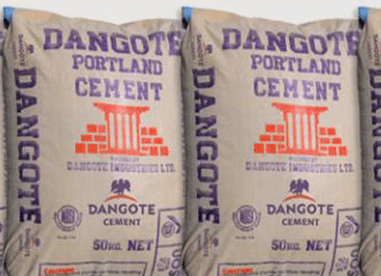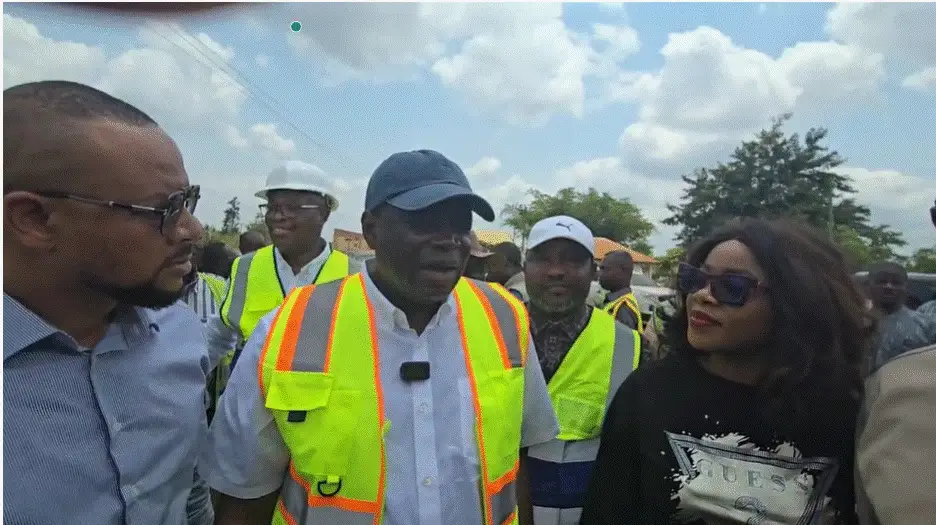
By Kingsley Webora TANKEH
Despite cedi-appreciation against the US dollar in first-half 2025, cement prices have remained stubbornly high even as costs of other key building materials have declined significantly.
Market checks show that iron rods, for instance, have dropped from about GH¢9,600 at beginning of the year to between GH¢6,000 and GH¢7,000. Security doors and plumbing materials have also seen sharp reductions, highlighting cement’s unusual resistance to a broader downward price trend in the construction sector.
For security doors, starting price dropped from GH¢1,750 to GH¢1,600 – taking GH¢150 off the price. Plumbing materials have also seen a sharp drop in price. For instance, the price of 20mm electrical pipe dropped from GH¢15 to GH¢9 – representing a 67 percent price drop.
However, despite cedi gains on the FX market and relative microeconomic stability, the price of cement has remained stubbornly high – having shrugged aside fervent calls from prominent government officials including the Minister of Trade, Agribusiness and Industry and some trade associations.
Historically, marginal loss in value of the lecal tender often occasioned price hikes, with many manufacturers usually blaming the hike on a clinker import burden. Price of cement rose from GH¢8.5 in 2008 to about GH¢20 for 2013 and has continued rising sharply over the years.
In a bid to curb arbitrary and disproportionate pricing, the then Minister for Trade and Industry, KT Hammond, laid a legislative instrument before parliament after earlier calls for price reversals were ignored.
After surviving tumultuous parliamentary scrutiny, the legislative instrument (LI 2480) was gazetted on November 23, 2023 to regulate cement manufacture and promote transparency in its wholesale and retail pricing. The LI mandated cement manufacturers to disclose their ex-factory prices for effective wholesale and retail price regulation.
Cement prices have continued to rise despite the cedi’s recent gains against the US dollar, sparking frustration among contractors and suppliers.
As of June 2024, the price of a 42.5R bag of cement had climbed to about GH¢110, following an 18.6 percent depreciation of the cedi that month. Dzata sold at GH¢108, Cimaf at GH¢107 and Ghacem – the market leader – at GH¢110. Other brands such as Diamond were priced between GH¢75 and GH¢85 while Dangote ranged from GH¢92 to GH¢94.
In March 2025, prices increased again by about GH¢9 per bag across retail outlets, following a slight hike in port tariffs on manufacturers. Currently, even with the cedi appreciating by 40 percent since the beginning of the year – now trading at GH¢10.70 to the dollar – cement prices remain high, ranging from GH¢90 to GH¢120. Ghacem and Dzata are both selling at around GH¢120 while Supercem goes for GH¢109 and Empire between GH¢90 and GH¢95.
Speaking to B&FT, Issah Ismaila Dambaro, project manager at Trust Construction and Supply Services, said the persistent high prices are crippling his business. “It has made our business slow. Over the last three months we hardly got a call or a job. Clients who have made financial commitments are waiting for prices to drop before asking us to continue.”
He noted that while iron rods have seen significant price reductions, cement remains costly – forcing many projects to be suspended. Rumours of a price cut expected later this year have further delayed client decisions, with many refusing to proceed with construction until prices ease.
Mr. Dambaro added that rising prices of sand and stone have compounded the challenge, blaming what he described as profiteering in the sector. “We as Africans are always quick to increase prices, but we don’t want to decrease. It’s just us causing the problems.”
So, what will it take for cement prices to drop?
Cement consumption in Ghana rose sharply from 1.8 million tonnes in 2000 to about 3.2 million tonnes in 2011 and further to 6 million tonnes in 2024. However, domestic production capacity has also expanded to 7.4 million tonnes per year – leaving an excess supply of 1.4 million tonnes above local demand.
Even though government has tried to regulate cement prices through the LI, there is little to show for the effort. Mr. Dambaro questioned the effectiveness of cement price regulation, alluding to a recent hike in April when cement prices went up to GH¢135 and GH¢140.
Despite the regulatory measures, the continued reliance on imported clinker is keeping prices high, according to some industry experts. Ghana is Africa’s largest clinker importer. It imported US$289million worth of clinker in 2023, the latest year for which data is available.
This continuous reliance on imported clinker leaves the cement manufacturing industry vulnerable to supply chain disruptions and volatile global markets.
Cement clinker makes up 95 percent of the Ordinary Portland Cement (OPC) used for construction. However, except clinker – the binding agent – all the other components of cement including gypsum and limestone are mined and processed in large quantities locally.
Earlier this year, CBI Ghana Ltd. – producer of Supacem – announced a US$100million investment in Limestone Calcined Clay Cement (LC3) plant following Ghana Standards Authority’s adoption in 2024. The LC3 technology is a viable clinker substitute.
The groundbreaking LC3 technology utilises locally sourced raw materials for producing cementitious material to reduce reliance on clinker import, lower production costs and ensure a more reliable cement supply in Ghana.
The LC3 technology will cut clinker use by almost half. It uses 50 percent clinker, instead of the 95 percent composition in Portland cement. The remaining 45 percent will be replaced with 30 percent calcined clay and 15 percent limestone. The 5 percent gypsum content remains unchanged.
This composition is eco-friendly and will support sustainable building practices while boosting local manufacturing, since its production requires less energy compared to OPC which is notoriously energy intensive.
However, despite adoption by local cement producers – especially Ghacem, the nation’s largest – LC3 technology is yet to occasion any price reduction.
Escalating price hikes of construction materials, particularly cement, partly contributed to a contraction in the construction sector. It contracted by 2.8 percent in real terms during 2023 following a 4 percent decline the previous year, further straining existing infrastructure and causing cost of rent and mortgages to go up.
The domestic construction sector is expected to expand by 7.6 percent in 2025 in real terms, following a robust recovery in 2024.
According to the Centre for Affordable Housing Finance in Africa, Ghana has the highest housing deficit in the whole of West Africa.
As government continues to pursue infrastructure development, particularly provision of affordable housing to address the 1.8 million-unit deficit, experts have called for a critical review of cement and other construction material costs.
The post What will it take for cement prices to drop? appeared first on The Business & Financial Times.
Read Full Story











Facebook
Twitter
Pinterest
Instagram
Google+
YouTube
LinkedIn
RSS